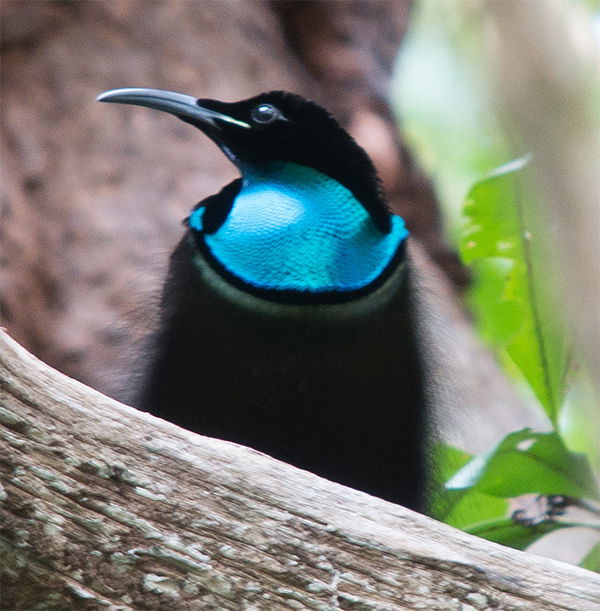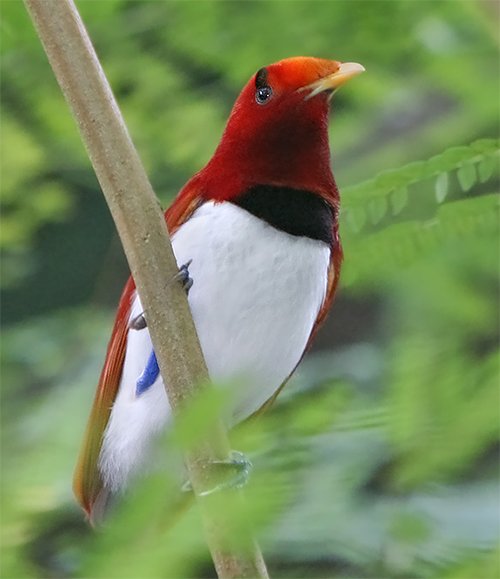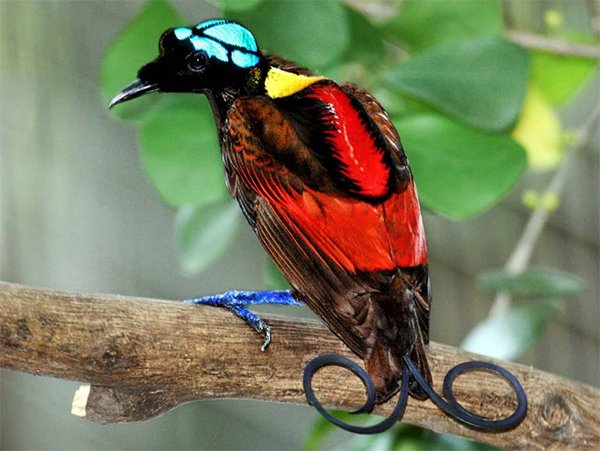Displays of Paradise
Andrea Lawardi, CC, via Wikimedia Commons
Paradisaeidae
by Inspector Barry Mins on June 21, 2022Hey kids, welcome back to our series on the mysteries of created kinds.
This week, we are heading to the jungles of Southeast Asia, where we’ll look for some extremely colorful birds.

These birds are known for their elaborate courtship displays and bright colors. Most species specialize in either fruit1 or insect diets, though a few will mix and match.2 Most species also have much more colorful and ornate males than females.
These birds practice “lek polygyny.” This means the males will stake out a territory (lek) and display for females. Females will look at his display and determine if they want to mate with him. Males mate with many females and, in most cases, provide no parental care to the young. The male’s displays can be quite complex,3 with one species’ courtship display consisting of nearly sixty distinct elements!4 Females raise the young alone and are quite busy doing it. One species feeds its young an average of 2.3 meals per hour.5 Now just imagine how busy your mom would be if she had to feed you that much!
Has anyone figured out our bird friend yet? Surprisingly, despite its incredible set of colors and unique breeding behavior, information on this kind is hard to come by. Perhaps this is because they are found largely in remote areas of New Guinea and Australia. This week’s kind is the Paradisaeidae—the bird of paradise kind. These birds are well-known for their beautiful color, with some males also displaying unique feathers and elaborate dances.
Try out this fun word search!
Clue
Here is your clue for next week:
This kind is found almost worldwide and has a special scale that hangs over its mouth, allowing it to burrow.
Ask a Question
Have you ever had a question about created kinds but didn’t know who to ask? Have you ever wanted to learn more about your favorite kind? Well, now you can! You can ask me, Inspector Barry Mins, a question! Have your parents help you fill out this form, and you might get your question answered in my column! If you have any questions about created kinds, feel free to send them my way!
Footnotes
- J. D. Grant and N. M. Litchfield, “Habitat use, home range and the diet of male Victoria’s Riflebird, Ptiloris victoriae,” Emu-Austral Ornithology 103, (2003): 121–126.
- B. K. McNabb, “Food habits and the evolution of energetics in birds of paradise (Paradisaeidae),” Journal of Comparative Physiology B 175, no. 1 (2005): 117–132.
- E. Scholes, J. M. Gillis, and T. G. Laman, “Visual and acoustic components of courtship in the bird of paradise genus Astrapia (Aves, Paradisaeidae),” PeerJ (2017).
- E. Scholes, “Courtship ethology of Carola’s Parotia (Parotia carolae),” The Auk 123 (2006): 967–990.
- R. H. Donaghey, D. J. Belder, and T. Baylis, “Incubation behavior and uniparental nestling care in the Huon Astrapia Astrapia rothschildi (Paradisaeidae),” Australian Field Ornithology 37 (2020): 67–75.
- © 2025 Answers in Genesis
- Privacy Policy
- Contact
- About



